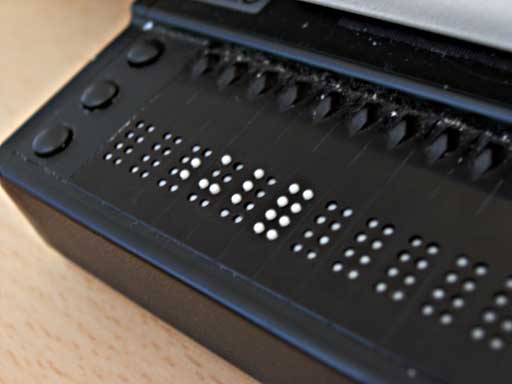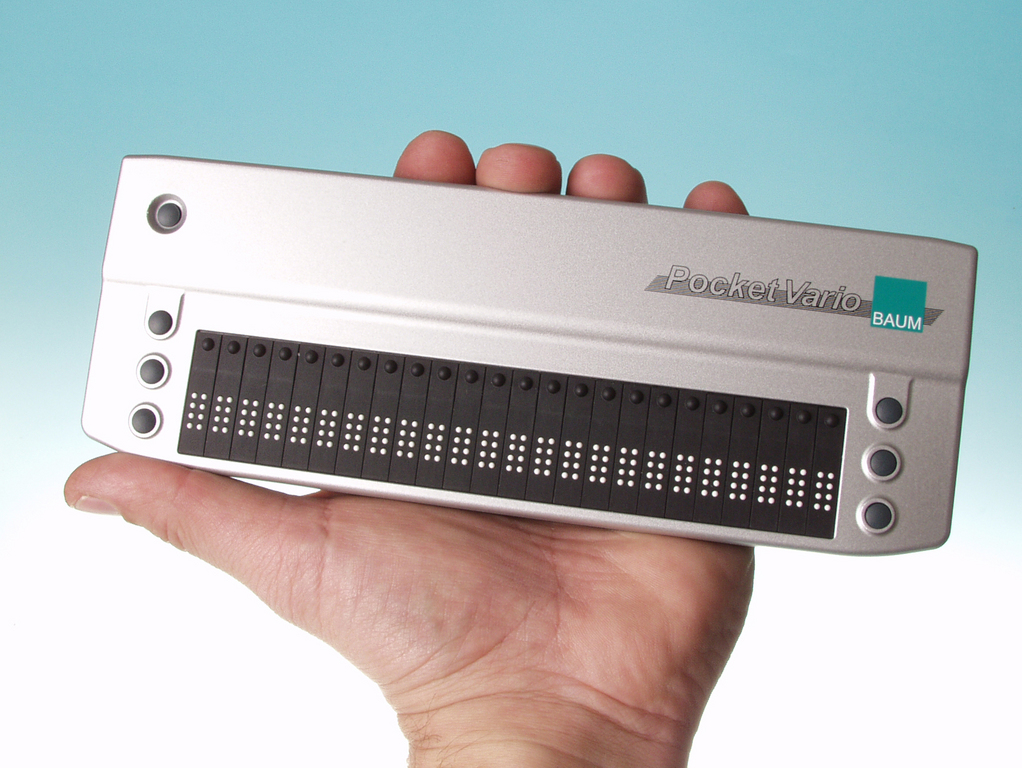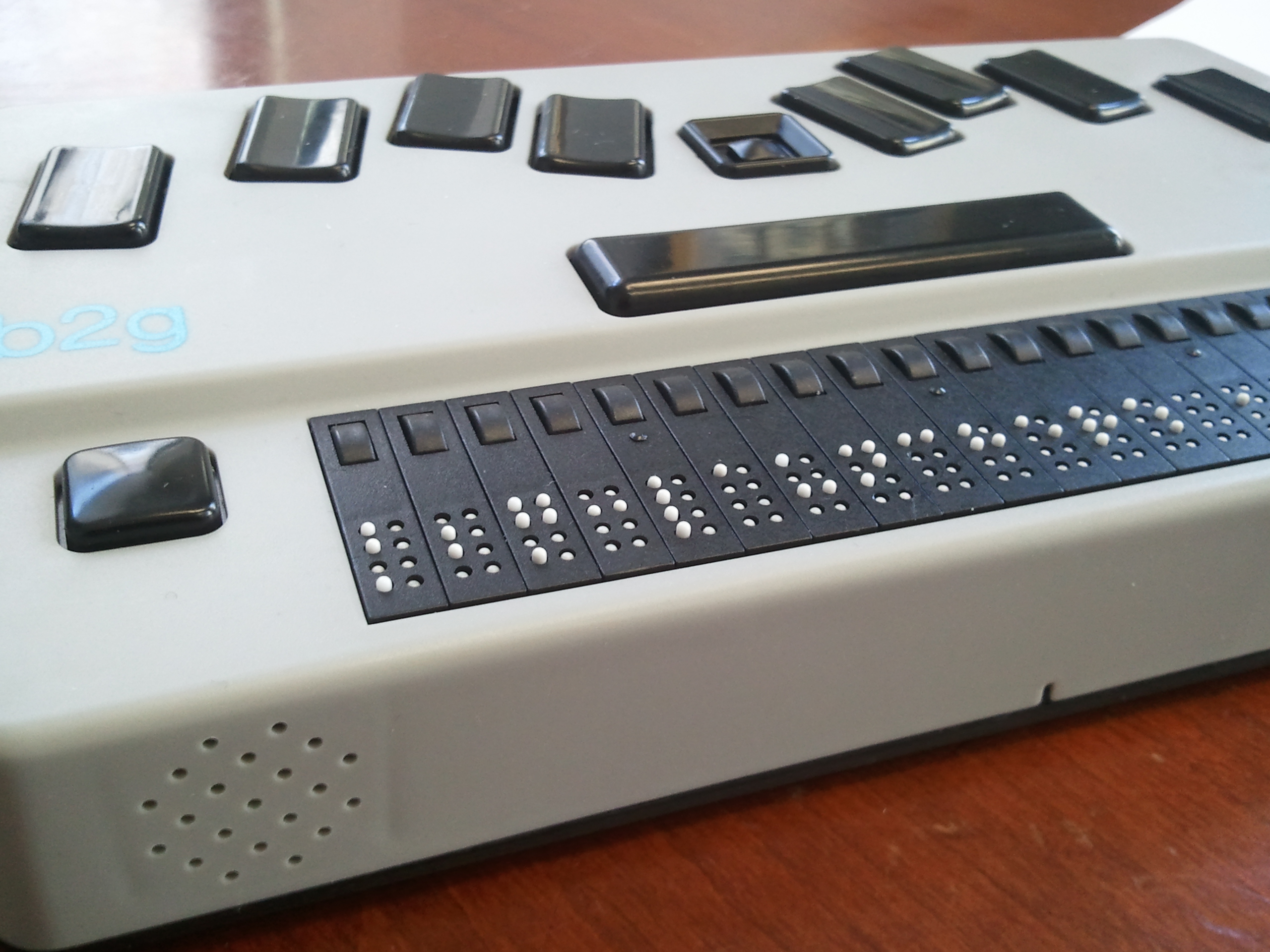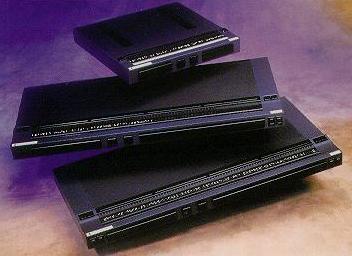Refreshable braille display
The Braille display, short line, or Braille display is a computer output device for blind people, representing the character in Braille. They are usually driven by screen readers, read the strings in selected areas of the screen and display in computer braille. This can blind a large part of the standard software use and work independently on the computer.
The function of the Braille display is based on the piezoelectric effect specifically drawn crystals that bend when applying an electrical voltage and thus then let a ram stick out as a point of a surface, electronically controlled to build the characters in Braille. The users can use their fingertips scan the characters. There are Braille, which can represent 12, 14, 18, 20, 40 or 80 characters.
On the Braille display control buttons are placed with which the screen image shown can be moved.
As more characters are needed for the computer work, as can be represented with six points, a fourth row is added to the three point line of standard Braille often, so eight points are available. In this way we obtain 256 combinations. However, the coding of the default character remains largely the same, the last line is simply empty.
Alternatively, screen readers can also provide a voice output. Compared with the reading of Braille displays are more accurate and give word for word again. Thus, the spelling can be checked directly, without the speech must spell.
Since Braille displays are produced only in small quantities, the production costs are correspondingly high. The purchase price for a line that can represent 80 characters, is about 10,000 €. The costs will be transferred to Germany in the present indication of the statutory health insurance. In Austria, the costs are reimbursed by the federal social security offices and countries.









